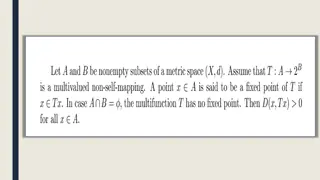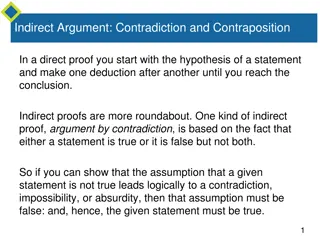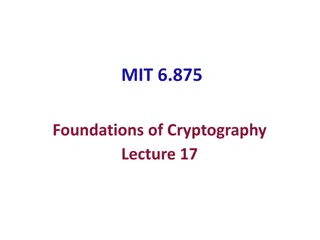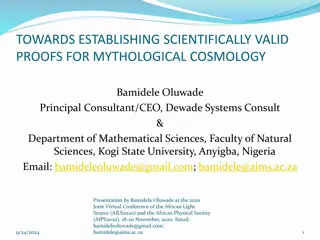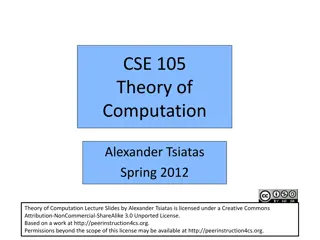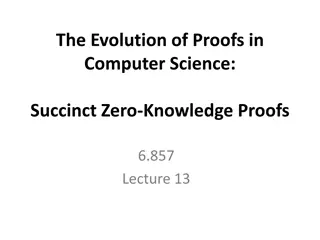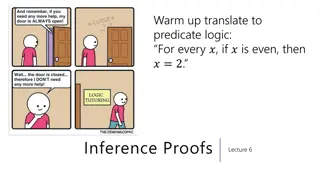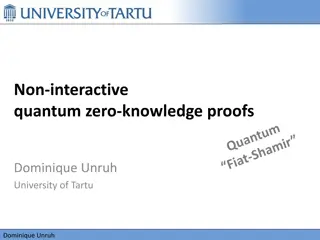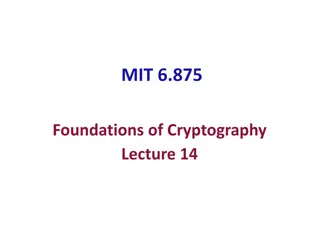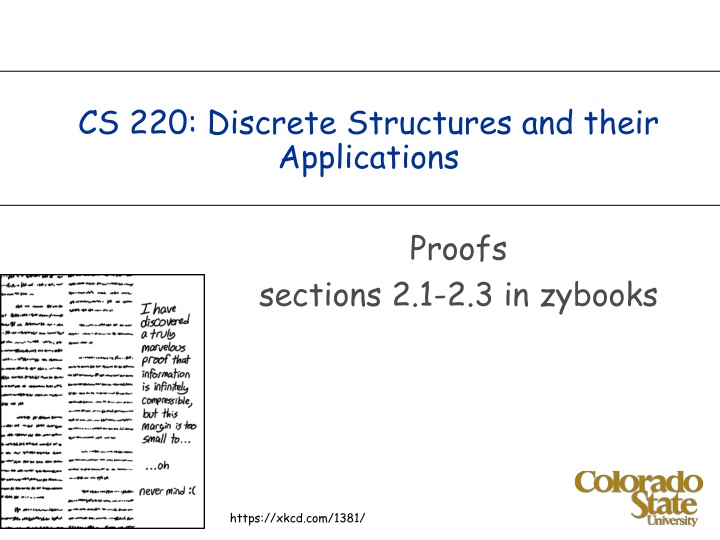
Understanding Proofs in Discrete Structures
Learn about proofs in discrete structures, including Fermat's Last Theorem, terminology, examples like Goldbach's Conjecture, and theorems with practical explanations and images. Explore the significance of proofs in mathematics and how to construct them effectively.
Download Presentation

Please find below an Image/Link to download the presentation.
The content on the website is provided AS IS for your information and personal use only. It may not be sold, licensed, or shared on other websites without obtaining consent from the author. If you encounter any issues during the download, it is possible that the publisher has removed the file from their server.
You are allowed to download the files provided on this website for personal or commercial use, subject to the condition that they are used lawfully. All files are the property of their respective owners.
The content on the website is provided AS IS for your information and personal use only. It may not be sold, licensed, or shared on other websites without obtaining consent from the author.
E N D
Presentation Transcript
CS 220: Discrete Structures and their Applications Proofs sections 2.1-2.3 in zybooks https://xkcd.com/1381/
Fermats last theorem Theorem: For every integer n > 2 there is no solution to the equation an + bn = cn where a,b, and c are positive integers
Terminology Theorem: statement that can be shown to be true Proof: a valid argument that establishes the truth of a theorem Conjecture: statement believed to be a true
Example Goldbach s conjecture: Every even integer greater than 2 can be written as the sum of two primes Image from https://en.wikipedia.org/wiki/Goldbach%27s_conjecture
Proofs What is a proof A valid argument that establishes the truth of a mathematical statement The rules of inference we saw: All the steps and rules were provided Not practical: formal proofs of useful theorems are long. In practice: informal proofs (good for human consumption) We will see methods for constructing proofs
Theorems Theorem: If x is a positive integer, then x x2. What is meant is: For all positive integers x x2. Many theorems are universal statements.
Theorems Theorem: If x is a positive integer, then x x2. What is meant is: For all positive integers x x2. Many theorems are universal statements. And some theorems can be universal statements over multiple variables with different domains: Theorem: If x and y are positive real numbers and n is a positive integer, then (x + y)n xn + yn.
Proofs Theorem: If x is a positive integer, then x x2. Proof. Let x be a positive integer, i.e. x > 0. Name a generic object in the domain and give assumptions about the object Since x is an integer and x > 0, x 1 Since x > 0, we can multiply both sides of the inequality by x to get: x * x 1 * x Simplifying the expression: x2 x End of proof symbol
Proof by exhaustion If the domain of a universal statement is small, then all elements can be exhaustively checked. Theorem: If n {-1, 0, 1}, then n2 = |n|. Proof. Check the equality for each possible value of n: n = -1: (-1)2 = 1 = |-1|. n = 0: (0)2 = 0 = |0|. n = 1: (1)2 = 1 = |1|.
Counterexamples Consider the following statement: If n is an integer greater than 1, then (1.1)n < n10. Is it true? Let s check some values n=2: (1.1)2=1.21<1024=210. n=100: (1.1)100 13780.61<100000000000000000000=10010. We might be tempted to think that this is true for all n.
Counterexamples Consider the following statement: If n is an integer greater than 1, then (1.1)n < n10. Is it true? Let s check some values n=2: (1.1)2=1.21<1024=210. n=100: (1.1)100 13780.61<100000000000000000000=10010. However: (1.1)686>(686)10.
Counterexamples What is the counterexample for the following statement: The multiplicative inverse of a real number x, is a real number y such that xy = 1. Every real number has a multiplicative inverse.
Counterexamples Once we found a counterexample, we can sometimes fix the statement into a provable theorem: Theorem: Let x be a real number such that x 0, then there is a real number y such that xy = 1. e.g. statement if n is an odd integer then n*n is even counter example 1*1 = 1 is not even but we cannot fix the statement to make it true WHY?
Proof techniques Proof techniques: Direct proof Proof by contrapositive Proof by contradiction Proof by cases Proof by induction later in the course
direct proof Want to prove a statement of the form p First step: assume p is true Next steps: apply inference rules using hypotheses and previously proven theorems Proceed until q is shown to be true q
Example Theorem: For every integer n, if n is odd, then n2is odd. Definition: an integer n is even if there exists an integer k such that n = 2k, and n is odd if there exists an integer k such that n = 2k + 1.
Example Theorem: For every integer n, if n is odd, then n2is odd. Proof. If n is odd, then n = 2k+1 for some integer k. apply definition of odd n2 = (2k+1)2= 4k2 + 4k +1 Therefore, n2 = 2(2k2 + 2k) + 1, which is odd. odd number from definition found k such that n2 = 2k + 1
Proof by contrapositive A proof by contrapositive proves a conditional theorem of the form p c by showing that the contrapositive c p is true. Based on the logical equivalence of p c and c p Proceeds by assuming c and using the same method as direct proof, showing that p
Example Prove If n is an integer and 3n + 2 is odd then nis odd. Proof by contrapositive. Suppose the conclusion is false, i.e. n is even. We need to show that 3n + 2 is even. Then by the definition of an even integer, n = 2k for some integer k Therefore 3n + 2 = 3(2k) + 2 = 6k + 2 = 2(3k + 1) Hence, 3n + 2 is even. Can you produce a direct proof?
Example Theorem: For every integer x, if x2 is even, then x is even. Which proof technique? Direct proof express x2 as 2k for some k, i.e. x = (2k) Not clear that sqrt(2k) is an even integer, or even an integer Proof by contrapositive prove that if x is odd then x2 is odd
Example Theorem: For every integer x, if x2 is even, then x is even. Proof by contrapositive. Suppose the conclusion is false, i.e. x is odd. We need to prove that x2is odd. Then by the definition of an odd integer, x = 2k + 1 for some integer k Therefore x2=(2k+1)2=4k2+4k+1=2(2k2+2k)+1. Therefore x2can be expressed as 2k' + 1, where k' = 2k2 + 2k is an integer. Hence, x2is odd.
Example Theorem: For every positive real number r, if r is irrational, then r is also irrational. Proof. Proof by contrapositive. Let r be a positive real number. We assume that r is not irrational and prove that r is not irrational. Since r is not irrational and is real, then r must be a rational number. Therefore r=x/y for two integers, x and y, where y 0. Squaring both sides of the equation gives: ( r)2=r=x2/y2. We expressed r as the ratio of two integers, so r is a rational number. Therefore r is not irrational.
Example Consider the following statement: If x and y are real numbers and x + y is irrational, then x is irrational or y is irrational. What is the contrapositive?


